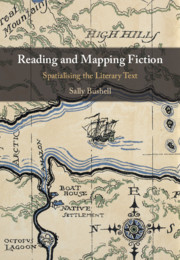Book contents
- Reading and Mapping Fiction
- Reading and Mapping Fiction
- Copyright page
- Dedication
- Contents
- Illustrations
- Acknowledgement of Prior Publications
- Acknowledgements
- Introduction
- 1 A Shifting Relationship: From Literary Geography to Critical Literary Mapping
- 2 Historicising the Fictional Map
- 3 Doubleness and Silence in Adventure and Spy Fiction
- 4 Mapping Murder
- 5 Playspace: Spatialising Children’s Fiction
- 6 Mapping Worlds: Tolkien’s Cartographic Imagination
- 7 Fearing the Map: Representational Priorities and Referential Assumptions
- 8 Reading As Mapping, or, What Cannot Be Visualised
- Bibliography
- Index
3 - Doubleness and Silence in Adventure and Spy Fiction
Published online by Cambridge University Press: 11 June 2020
- Reading and Mapping Fiction
- Reading and Mapping Fiction
- Copyright page
- Dedication
- Contents
- Illustrations
- Acknowledgement of Prior Publications
- Acknowledgements
- Introduction
- 1 A Shifting Relationship: From Literary Geography to Critical Literary Mapping
- 2 Historicising the Fictional Map
- 3 Doubleness and Silence in Adventure and Spy Fiction
- 4 Mapping Murder
- 5 Playspace: Spatialising Children’s Fiction
- 6 Mapping Worlds: Tolkien’s Cartographic Imagination
- 7 Fearing the Map: Representational Priorities and Referential Assumptions
- 8 Reading As Mapping, or, What Cannot Be Visualised
- Bibliography
- Index
Summary
Chapters Three, Four, Five and Six focus on the emergence of explicit maps as an integral element within popular genres and thus follow a rough chronology from the mid-nineteenth to the mid-twentieth century. Chapter Three explores the map in Adventure Fiction as it emerges in the late nineteenth century at a point when literary maps proliferate across texts and genres. This chapter offers a detailed reading of two iconic maps in Treasure Island and King Solomon’s Mines and seeks to show that visual and verbal meanings are fully integrated. In the final sections of the chapter, the concept of doubling in map and text is taken to its furthest extreme and works to create a new genre – the spy thriller. This is analysed with reference to John Buchan and full analysis of Erskine Childers’ The Riddle of the Sands. (139)
Keywords
- Type
- Chapter
- Information
- Reading and Mapping FictionSpatialising the Literary Text, pp. 92 - 126Publisher: Cambridge University PressPrint publication year: 2020

